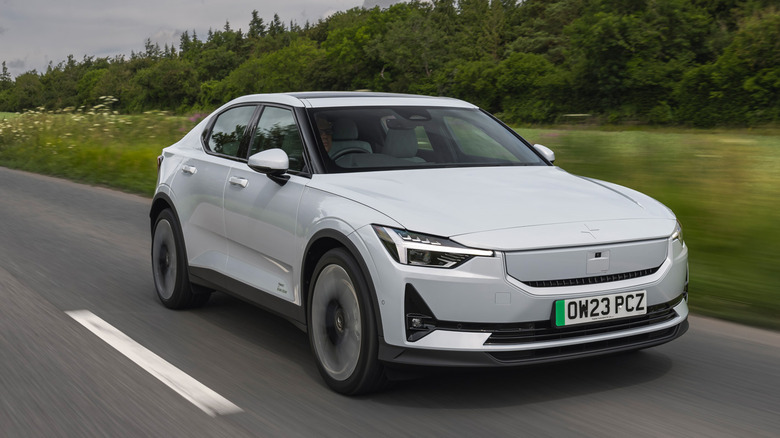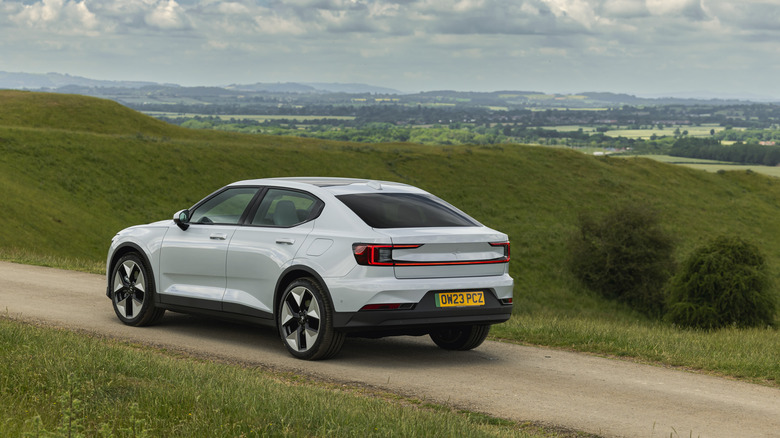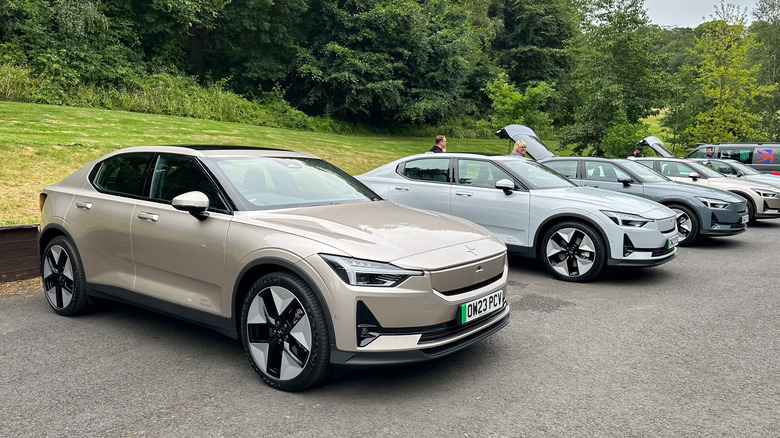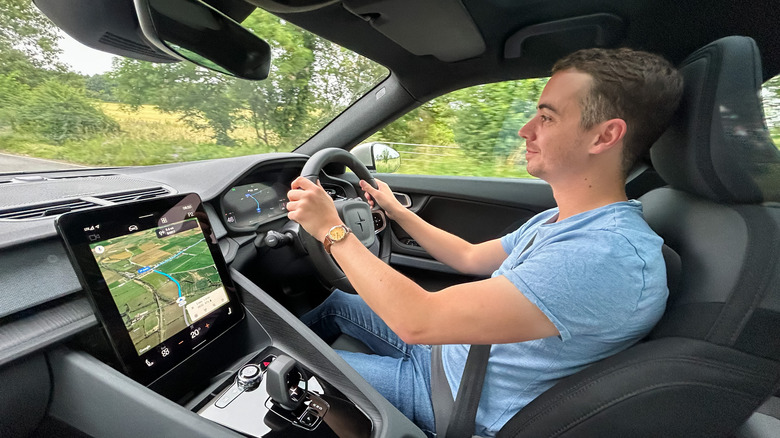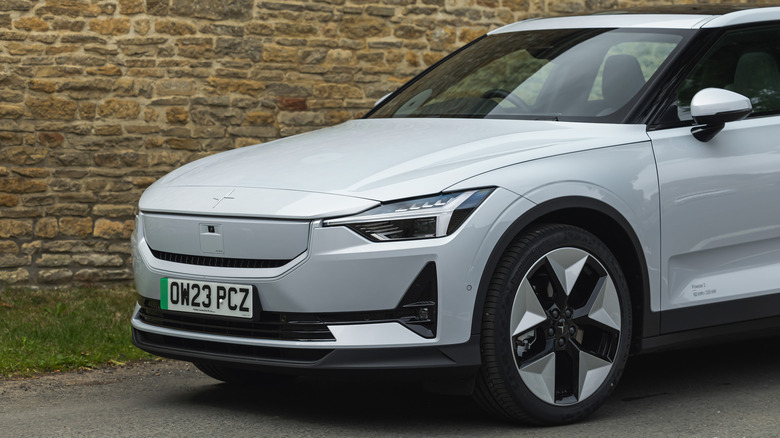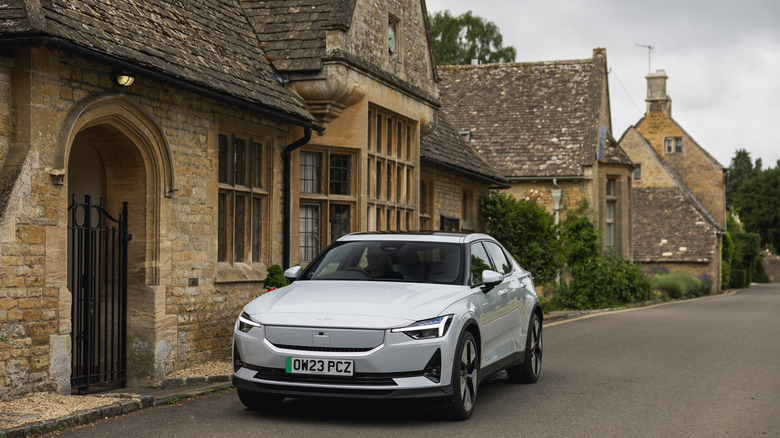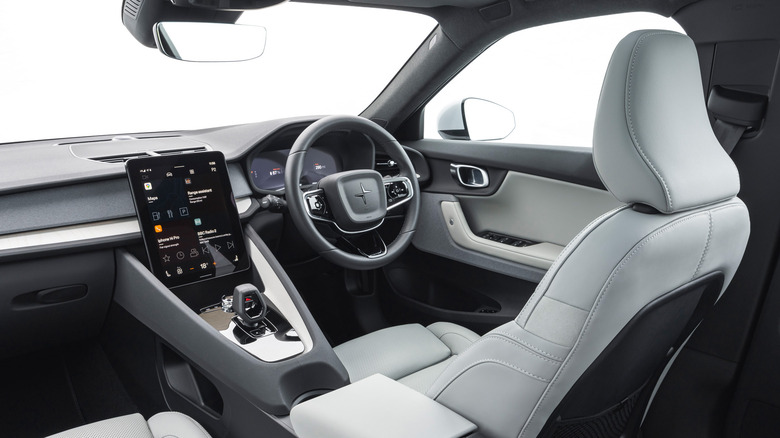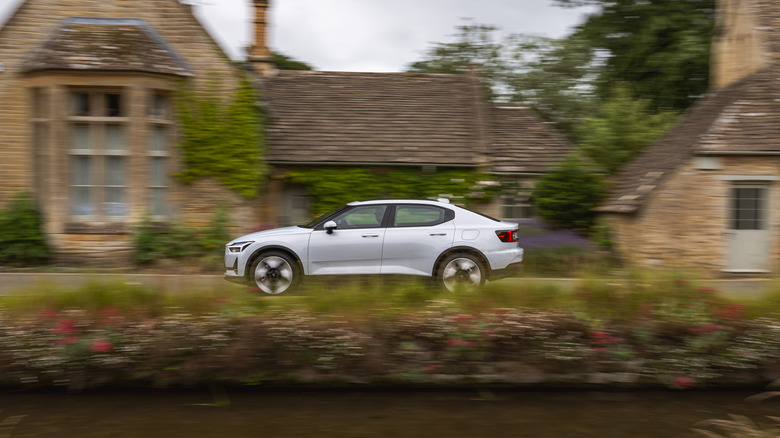2024 Polestar 2 First Drive: Focused Upgrades Make A Difference Where It Matters
In the ICE days a new model year meant a couple of new color options and perhaps, if you're lucky, a small cabin upgrade. Maybe a nice bit of soft lining for the door bins to stop your Coke can from rattling around. But for electric cars, with their internet connections and their near-infinitely adjustable battery control modules, so much more is possible — and this brings us to the 2024 Polestar 2, which benefits from a set of snazzy new wheels and a nose job to bring it into line with the upcoming Polestar 3.
More importantly, it also gains some serious drivetrain enhancements. These include a 50 mile increase in claimed range, a 9% reduction in energy usage, and a 34% increase in charging speed. Oh, and the base, single-motor version has switched from front- to rear-wheel-drive, while every version is markedly quicker than before and all are now produced with a reduced carbon footprint, Polestar says.
These are the sort of changes that would have taken a decade in the old, hydrocarbon-driven world. So while the new Polestar 2 looks almost identical to its predecessor, and the interior is pretty much unchanged too, the under-the-skin changes are vast.
So much change, so little difference
And yet, all of those fundamental changes go almost entirely unnoticed during everyday driving. If you really, really go looking for it you might just spot how the single-motor variant now feels rear-driven.
The tail is now more likely to dance under extreme acceleration. But traction is such that, if your commute to work were a wedding reception, the Polestar 2 is still more likely to be sitting at the back table, waiting for the first taxi home, than busting a move on the dance floor. That said, the hint of torque-steer exhibited by its front-drive predecessor when accelerating like a hooligan out of tight corners is gone.
You could also kid yourself into spotting the reduced weight over the front axle, given the motor is no longer there. But if you're driving in a way to notice such a thing then you're really not the typical electric SUV customer, despite Polestar's more sporting credentials over sister company Volvo.
Truth is, the undeniably impressive changes Polestar has added to the new 2 aren't all that noticeable during the day I spent with it. The circa four-hour driving route didn't trouble the battery of the 2, and nor did it cause a blip on my range anxiety radar. But it was nice to know that, should we have driven considerably further, the EV would have lasted longer than before, and charged more quickly once emptied.
What's actually new
Maximum charge rate for the new 82 kWh battery of the Polestar 2 Long Range Single Motor is now an impressive 205 kW, so long as it's plugged into an equally speedy charger. The best-case scenario is that a top-up from 10 to 80 percent could take as little as 28 minutes.
The visually identical 2024 Polestar 2 Long Range Dual Motor is more powerful — 421 hp compared to 299 hp — and quicker to 60 mph — 4.3 seconds versus 5.9 — but is limited to a maximum charge rate of 155 kW, the same as its predecessor.
EPA range is up to 276 miles for the dual motor and 320 miles for the less powerful single motor variant.
These are the changes that matter. The new Polestar 2 goes further, does so more quickly and more efficiently, and then charges more rapidly too. Maximum points scored in terms of what electric car buyers want from their new wheels.
The positives remain unchanged
Drivetrain aside, the new Polestar 2 is the same as it was before. This means it's a small-ish SUV with seating for four adults (the middle rear seat really is pretty small), a decent trunk, and a stylish interior that features a portrait touchscreen running Google's Android Automotive OS.
Log in with your Google credentials and you're greeted with a system that runs Google Maps, the Play store, the Google Assistant, and apps like Spotify just like your smartphone — but, crucially, without needing to actually connect your handset. Just throw it in the cubby hole under the armrest and forget about it; the car is already logged into your digital life with its own internet connection and ready to go.
Google Assistant works just as it does on your smart speaker at home. Say "hey Google, navigate to the office" and navigation will begin. The voice assistant can also check the weather, play music and adjust the car's climate system. It can't quite do everything — Google Assistant can't adjust the beautiful frameless mirrors or move your seat back — but the system still feels nicely cohesive most of the time.
There's also wireless charging and Apple CarPlay for iPhone users who don't want to log into the car with their Google account, or perhaps don't even have one in the first place.
Into the SmartZone
The biggest visual change for the 2024 Polestar 2, which starts at $52,550, is its adoption of the SmartZone first seen on the Polestar 3 that's due out next year. Polestar smartly observes how the traditional face of a car has shifted from breathing to seeing, as grilles feeding radiators with cold air give way to cameras, radar and Lidar to help the car see its surroundings.
It's a cute aesthetic observation and one that means the Polestar 2 now has a face that is mostly filled in and features the car's front-facing camera and mid-range radar. As other car companies fail to neatly hide these components, I like how Polestar has found a way to display them cleanly in a way that embraces technology instead of begrudgingly making space for it. See the otherwise-beautiful Ferrari Roma for an example of the latter.
All versions of 2024 Polestar 2 now come with blind spot, cross traffic, and parking aids, plus a 360-degree camera and auto-dimming mirrors. The Plus Pack has been reduced by $2,000 to $2,200 and includes a heat pump and a Harman Kardon sound system.
Also new for model year 2024 is a set of 20-inch forged alloy wheels that come as part of the optional Performance Pack, along with Brembo brakes, manually adjustable Öhlins dampers, and gold seatbelts, as seen on previous generations of the 2. Available only on the dual-motor car, the pack also unlocks extra power, raising the total output to 455 hp.
With composure comes firmness
Anyone familiar with how the old Polestar 2 rode will immediately recognize the 2024 model. There's a sportier feel here than with the 2's Volvo XC40 sibling, and on smooth roads this translates into a poised and agile ride. But the standard dampers can occasionally lose their composure when road quality deteriorates, causing the ride to feel busy and a little unsophisticated.
As with its predecessor, the new Polestar 2 is generally on the firm side, but whether you prefer this to the softer Volvo is purely a matter of personal taste. Neither is wrong, but one will shine more brightly depending on how you like your car to ride and the condition of your local roads.
Other Polestar 2 traits also remain, including the accelerator pedal that is more firmly sprung than most EVs, and therefore requires slightly more effort to press. It takes a few miles to get used to, but you soon appreciate how well-calibrated it is. Whether you are crawling in traffic, mooching through town or making progress on the highway, getting the right amount of performance from the car feels intuitive, albeit with a firmer prod of the pedal.
The steering is nicely weighted, with the option for more if you prefer, and regenerative braking can be switched on or off. Leave it on and one-pedal driving is easy.
Range and charging
As mentioned earlier, range has been improved for the 2024 model year. The dual-motor Polestar 2 now gets 276 miles on a charge, which is a modest increase of 10 miles on its predecessor, while the new single-motor variant is aiming for an EPA range of 320 miles, a 50 mile improvement.
Such is the strict nature of the US's EPA range test, in its European markets Polestar is quoting a WLTP range of up to 406 miles for the long-range, single-motor car, 86 miles beyond the EPA estimate of the same model. Hopefully for US customers the EPA figure, which is an estimate predicted by Polestar for now, is as conservative as the WLTP figure is optimistic.
Anecdotally, our drive of the single-motor car saw its range tick down slowly and predictably throughout a fairly long and winding drive across the English countryside. We of course knew the route was created without the need for a battery top-up, but it was nice to note that, however we drove, range anxiety was entirely non-existent. This truly feels like an EV where its driver will want a break before the battery requires a top-up.
Quicker, 205 kW charging once you arrive at the charger is also a nice bonus. It'll be interesting to see how capable the Polestar's battery is of maintaining its maximum charge rate, before inevitably slowing as the cells fill up.
2024 Polestar 2 Verdict
When Polestar arrived on the scene back in 2020 it already felt like a fully-rounded automaker, no doubt helped by the experience and deep pockets of its owner, the Chinese automotive giant Geely that also controls Volvo and Lotus. Three years later, the 2 still looks as modern as ever, with aesthetics that really wanted for no more than the subtle facelift received with the 2024 model year.
Instead, Polestar has focused on the EV fundamentals, and there's no better formula for improvement than more range, greater performance and faster charging. The Polestar 2 delivers on all of this, while packing a set of attractive new wheels and — perhaps most importantly of all — reminding us just how well-resolved the car was, right out of the blocks.
As ever, the Polestar 2 makes for a very strong rival to the Tesla Model 3 and Model Y, while offering a sharp-suited alternative to more traditional options from German manufacturers and close relative Volvo.
